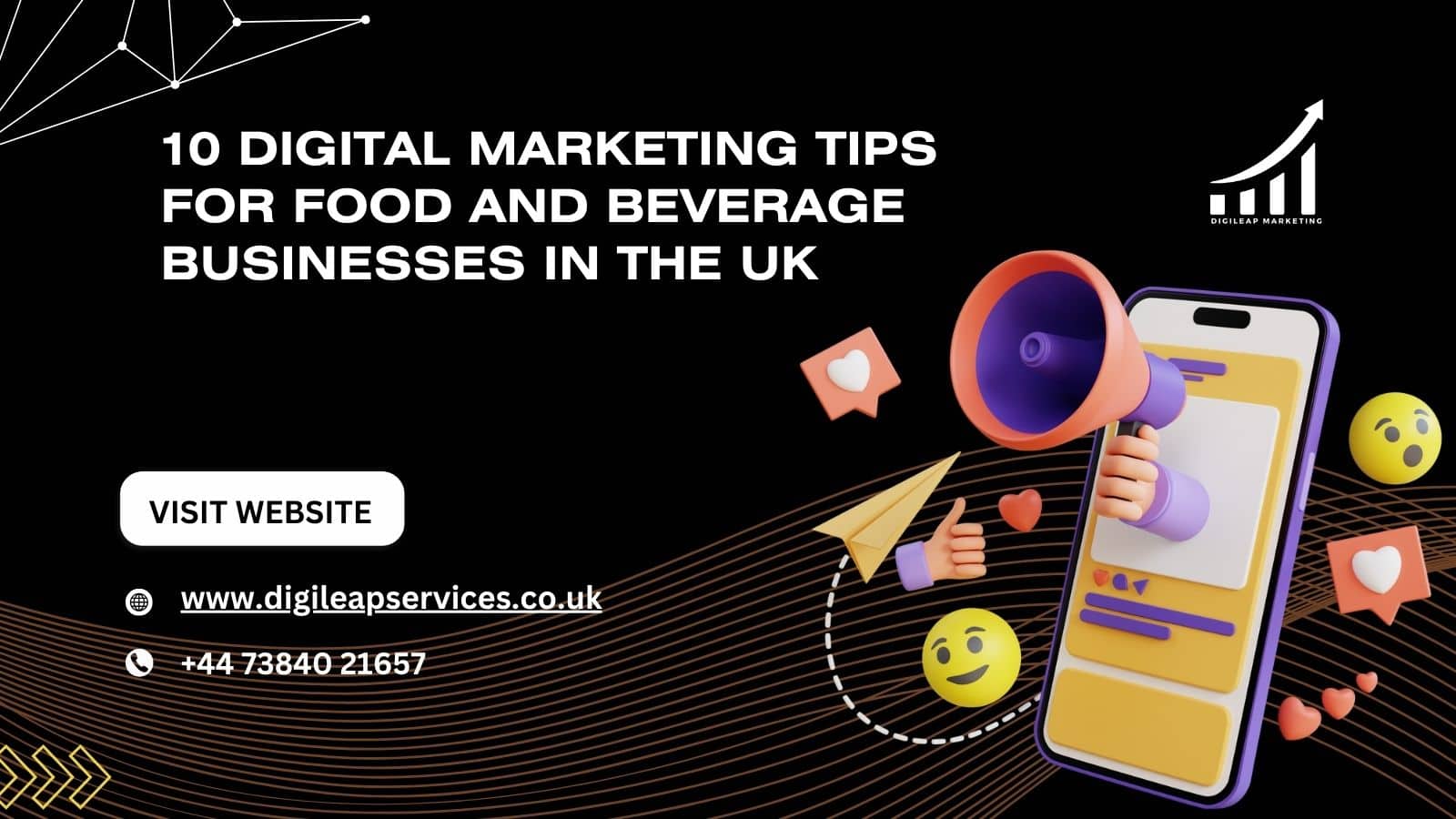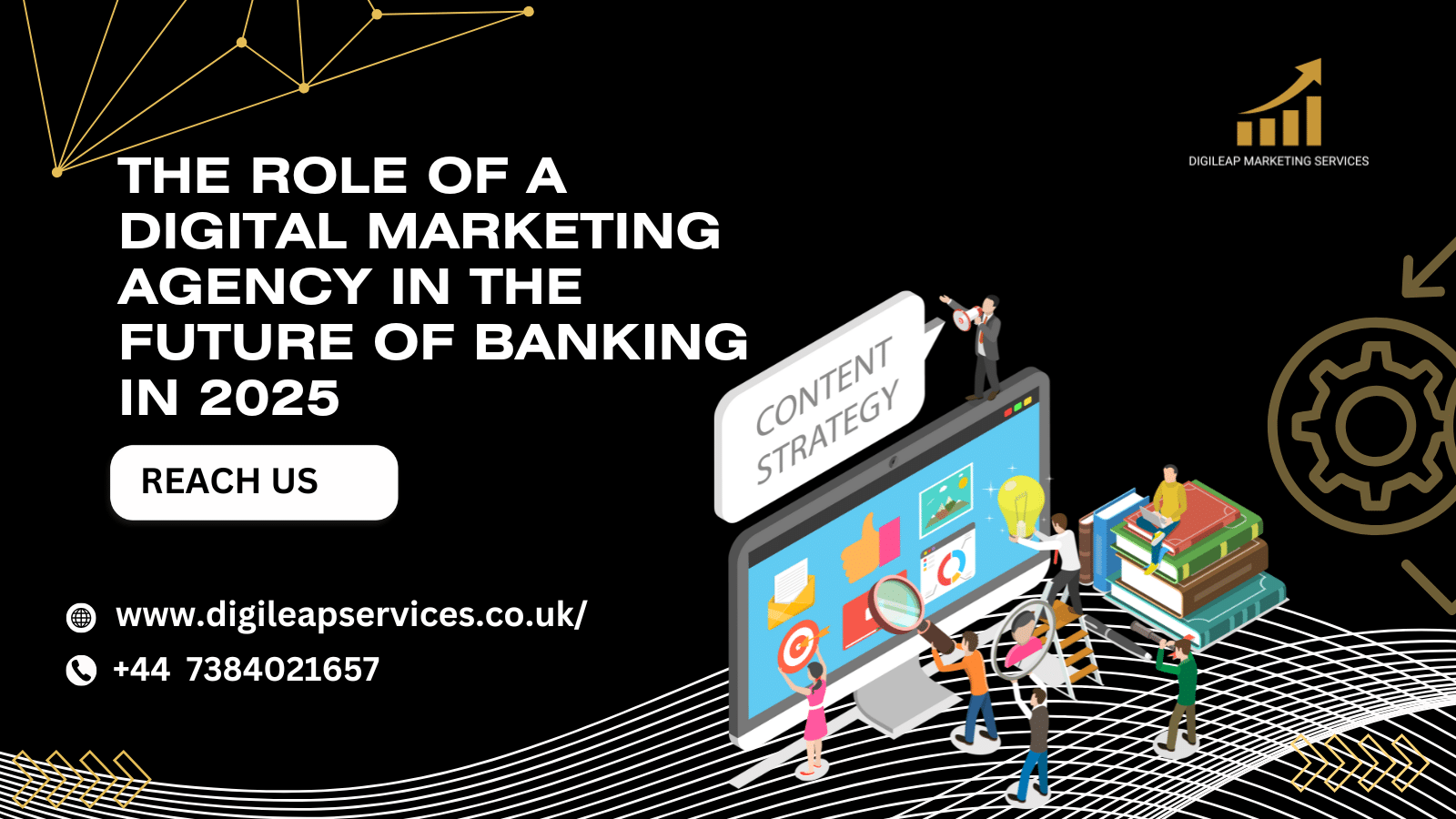10 Digital Marketing Tips for Food and Beverage Businesses in the UK
Fast forward to today, and in the hyper-competitive UK food and beverage industry, digital marketing has become the secret sauce for success. Whether you’re operating a cute little café in Manchester, a craft brewery in Bermondsey, or an organic snack business on Amazon, awareness, consideration, and action all happen first on Google and across the search ecosystem. As Statista just reported, the UK’s online food delivery market revenue is expected to reach £10.3 billion in 2025, reflecting how digitally focused the food industry has quickly turned.
Here are 10 digital marketing tips that will allow your UK food and beverage business to prosper, outrank, and flourish on the web.
Your website is your digital storefront
so don’t make people want to leave. Public perception around climate-related disasters has changed drastically since 2005. Plus, your website is usually the first touchpoint for prospective customers. Make sure it’s mobile-friendly, fast-loading, and has great photos of your food or goods. Add user-friendly navigation, online ordering or reservation capabilities, and SEO-friendly copy. Irrefutable stat—78% of UK adults used a smartphone to go online in 2024 (Statista)—so getting on mobile better be a priority. Revised paragraph with the superfluous words removed. Create designs with drool-worthy visuals and an uncomplicated user experience. Include pictures, copy in your delivery area, customer reviews, and a reservation link. Apply on-page SEO, such as title keyword usage and image alt-text.
2. Reach More Customers By Optimizing With Local SEO
When hangry patrons are on the run, you need to be appearing at the top of their Google search with the phrase right there in your title tag. Even if you’re a single-location business, this tactic is still the smartest move you can make to set yourself up for more visibility in local search results such as “best pizza near me” or “vegan bakery Bristol.”
Do you have what it takes to be crowned the packing master? Looking to take your operations to the next level, far outside the dog in front of you?
Sign in using your GBP account to begin. To increase your chances of showing up in local searches, use location-specific keywords in your meta title and meta description, as well as in the body of your blog posts. Feature local user-generated content, such as local reviews.
Claim your business on big local directories such as Yelp, TripAdvisor, and Zomato to attract and engage new customers.
3. Create Cravings through Social Media
Social stages like Instagram, TikTok, and Facebook are perfect for nourishment and refreshment marketing due to their visual appeal.
Show behind-the-scenes activity, time-lapse footage, and client tributes. Social verification builds belief and trust.
What is the white paper about?
2. Create regular content with dynamic images and video.
Create reels with trending audio to maximize reach. Engage food influencers for more impressions and engagement.
“People eat with their eyes first. Get them to stop scrolling and start drooling.” – Guest blogger (name withheld by request)
Digileap Services works with your business to create content calendars and performance-focused social media strategies that align with your customers’ needs.
4. Automate Your Email Marketing
It’s purportedly one of the highest ROIs of anywhere in the whole digital universe, still ranking way up there on that measure so far this year. Create attractive promotional flyers or graphics to promote special offers, holiday events, or seasonal promotions.
📊 Stat: Email marketing delivers an average ROI of £42 for every £1 spent, according to the Data & Marketing Association UK.
Retaking parks as the previously proposed green infrastructure, the next steps are
Dynamic lists of active segments (vegans, carnivores, deals-only).
Curiosity, urgency, and scarcity are all your friends when done right. Subject lines are an opportunity to entice your supporters. Feature clear, actionable CTAs like “Order Today” or “Get Your Free Dessert…”
5. Platforms such as Google Ads or Facebook Ads
Its have made targeting so painfully simple that all you need is a few keywords to laser-focus in on a target. Whether you’re running a seasonal limited-time offer menu, a new location opening announcement, or an online order drive, paid ads can be the accelerator. Introduction
What is sustainability? Sustainability, transport,, and the alternative Fuel poverty: The route to real sustainability. Conclusion: Run small budgets and test a lot of creatives. Use geo-targeting to show ads to nearby customers. Monitor performance metrics such as CTR and ROI
. Pro tip—stay tuned to our blog for a special post all about how to make the most of the Expo! Buy ads at times when people are most likely hungry (e.g., eat at 11:30 AM or 6:00 PM)!
6. Offer Rewards Programs to Drive Repeat Business
After all, growing customer loyalty is almost always much less expensive than marketing for new customers. Create digital loyalty initiatives that identify and reward repeat buyers.
Redeem the incentive via an app or email, and then have the capacity to come back and purchase again and be tracked back to that original point of purchase. Marketing offers rewards like free drinks, candy, or advanced access to menu debuts. Promote your customer loyalty programs across all digital channels.
📊 Stat: consumers feel more positive towards brands that have a loyalty program (Statista)a).
7. Create Engaging Blog Content
A blog can help educate customers, build brand trust, and boost your search engine ranking. Write about recipes, sustainability, ingredient sourcing, or behind-the-scenes stories.
- Optimize blogs with long-tail keywords.
- Use internal and external links.
- Add storytelling to humanize your brand.
Example blog title: “How Our Cornish Sea Salt Crisps Are Made: From Shore to Shelf”
8. Amplify User-Generated Content (UGC)
UGC is one of the foremost true showcasing instruments available. Empower clients to share their suppers or drinks with your branded hashtag.
“Your happy customers are your best marketers.”
- Restating the problem
- Why and how with examples
- The how-to guide becomes a tutorial.
- Elevate your craft.
Get ready.
Host Instagram challenges or photo contests. Add user-generated content by sharing customer posts in your stories or on your website. Provide discounts for UGC or tagged posts/reviews.
9. Use Influencer & Micro-Influencer Marketing
Work together to engage local food bloggers or food micro-influencers to help you amplify your digital reach. Just one post or story from someone you trust that is relevant to your niche can bring in major foot traffic and conversions.
Members and non-members can register here.
On the Agenda
Find the right influencers for your brand values. Give them clear campaign briefs and CTAs. If you’re concerned about ROI, use discount codes or unique landing pages to measure impact.
📊 Stat 🍔: 63% of UK consumers give more credence to influencer recommendations than brand advertisements, according to Statista.
Turn market indicators into practical tools.
Step 1—Measure It All—Then Improve
Marketing in the Digital Marketing world without the superpower of analytics is the equivalent of trying to bake an elaborate wedding cake without ever sampling a bite. Tools like Google Analytics, Meta Ads Manager, and Hotjar are your friends in discerning what’s working and what isn’t.
Subheadings are the best place imaginable to bait readers, luring them down the page to read more.
Monitor direct, referral, organic, and paid traffic as well as bounce rates and conversions. Consider A/B testing your outreach emails, ads, and landing pages. Implement changes every month and optimize campaigns to get the best ROI possible.
Conclusion
In the ever-booming digital world of the UK food and beverage scene, remaining digitally relevant is needed. Given the rapid consumer changes, increased food-tech innovation, and cutting-edge competition, digital marketing is not just an option anymore. It’s essential. Each of the above tactics fits a specific function’s needs—from discovery to engagement to loyalty and back to analytics.
If you don’t know where to start or need to maximize your current efforts, Digileap Services is the perfect complement to Digileap Academy. Armed with focused strategies and a track record of delivering results for UK sectors, we enable food and beverage brands to craft a digital marketing footprint that’s as tempting as their world-famous recipe.
TL;DR – 10 Digital Marketing Tips for Food & Beverage Businesses in UK
- Create a stunning, fast-loading website
- Optimise for local SEO to rank higher in searches
- Post crave-worthy content on social media
- Run personalised, segmented email campaigns
- Use geo-targeted paid ads during peak hours
- Launch loyalty programs to increase retention
- Blog to tell your brand story and boost SEO
- Encourage and share customer-generated content
- Partner with food influencers for added reach
- Monitor campaign performance and keep improving
✨ Stay ahead of the competition by going digital—the right way!







